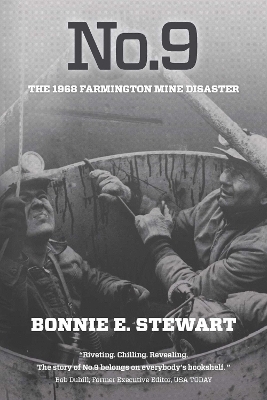
No.9
The 1968 Farmington Mine Disaster
Seiten
2012
West Virginia University Press (Verlag)
978-1-933202-77-8 (ISBN)
West Virginia University Press (Verlag)
978-1-933202-77-8 (ISBN)
Ninety-nine men entered the cold, dark tunnels of the Consolidation Coal Company's No.9 Mine in Farmington, West Virginia, on November 20, 1968. A few moments before 5:30 a.m., the No.9 blew up. This title explains how such a thing could happen - how the coal company and federal and state officials failed to protect the 78 men who died in the mountain.
Ninety-nine men entered the cold, dark tunnels of the Consolidation Coal Company's No.9 Mine in Farmington, West Virginia, on November 20, 1968. Some were worried about the condition of the mine. It had too much coal dust, too much methane gas. They knew that either one could cause an explosion. What they did not know was that someone had intentionally disabled a safety alarm on one of the mine's ventilation fans. That was a death sentence for most of the crew. The fan failed that morning, but the alarm did not sound. The lack of fresh air allowed methane gas to build up in the tunnels. A few moments before 5:30 a.m., the No.9 blew up. Some men died where they stood. Others lived but suffocated in the toxic fumes that filled the mine. Only 21 men escaped from the mountain.
No.9: The 1968 Farmington Mine Disaster explains how such a thing could happen - how the coal company and federal and state officials failed to protect the 78 men who died in the mountain. Based on public records and interviews with those who worked in the mine, No.9 describes the conditions underground before and after the disaster and the legal struggles of the miners' widows to gain justice and transform coal mine safety legislation.
Ninety-nine men entered the cold, dark tunnels of the Consolidation Coal Company's No.9 Mine in Farmington, West Virginia, on November 20, 1968. Some were worried about the condition of the mine. It had too much coal dust, too much methane gas. They knew that either one could cause an explosion. What they did not know was that someone had intentionally disabled a safety alarm on one of the mine's ventilation fans. That was a death sentence for most of the crew. The fan failed that morning, but the alarm did not sound. The lack of fresh air allowed methane gas to build up in the tunnels. A few moments before 5:30 a.m., the No.9 blew up. Some men died where they stood. Others lived but suffocated in the toxic fumes that filled the mine. Only 21 men escaped from the mountain.
No.9: The 1968 Farmington Mine Disaster explains how such a thing could happen - how the coal company and federal and state officials failed to protect the 78 men who died in the mountain. Based on public records and interviews with those who worked in the mine, No.9 describes the conditions underground before and after the disaster and the legal struggles of the miners' widows to gain justice and transform coal mine safety legislation.
Bonnie E. Stewart is Assistant Professor of Journalism at West Virginia University, USA. She is a former investigative reporter whose work earned The George Polk Award and the national Sigma Delta Chi Award for Public Service.
| Erscheint lt. Verlag | 30.11.2012 |
|---|---|
| Verlagsort | Morganstown |
| Sprache | englisch |
| Maße | 149 x 226 mm |
| Gewicht | 333 g |
| Themenwelt | Geisteswissenschaften ► Geschichte ► Allgemeine Geschichte |
| Geisteswissenschaften ► Geschichte ► Regional- / Ländergeschichte | |
| Technik ► Bergbau | |
| ISBN-10 | 1-933202-77-7 / 1933202777 |
| ISBN-13 | 978-1-933202-77-8 / 9781933202778 |
| Zustand | Neuware |
| Informationen gemäß Produktsicherheitsverordnung (GPSR) | |
| Haben Sie eine Frage zum Produkt? |
Mehr entdecken
aus dem Bereich
aus dem Bereich
eine Familiengeschichte der Menschheit
Buch | Hardcover (2023)
Klett-Cotta (Verlag)
CHF 68,60
Eine wahre Geschichte von Schiffbruch, Mord und Meuterei
Buch | Hardcover (2024)
C.Bertelsmann (Verlag)
CHF 34,95


